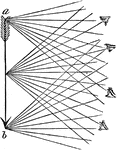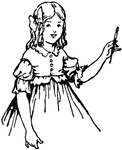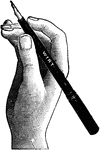Clipart tagged: ‘pencil’

Camera Obscura
"Camera obscura strictly signifies a darkened chamber, because the room must be darkened, in order to…

Camera Obscura
"Camera obscura strictly signifies a darkened chamber, because the room must be darkened, in order to…

Compasses
"The compasses, next to the T square and triangles, are used more than any other instrument. A pencil…
Compasses
"The compasses, next to the T square and triangles, are used more than any other instrument. A pencil…

Compasses
"The compasses, next to the T square and triangles, are used more than any other instrument. A pencil…

Compasses
"The compasses, next to the T square and triangles, are used more than any other instrument. A pencil…
Compasses
"The compasses, next to the T square and triangles, are used more than any other instrument. A pencil…

Compasses
"The compasses, next to the T square and triangles, are used more than any other instrument. A pencil…
Conical Point of Pencil
A pencil sharpened in a conical point. Conical points will wear away faster than a wedge or flat point.

Drawing a Horizontal Line
All lines in a mechanical drawing are made with the aid of an instrument. Horizontal lines are drawn…

Irregular Curves
"Curves other than arcs of circles are drawn with the pencil or ruling pen by means of curved or irregular-shaped…
Ruling Pen
A form of pen used for drawing lines of even thickness. It commonly consists of two blades which hold…

Pencils of Rays
"These pencils of rays not only flow from the points designated in the figure, but in the same manner…
Wedge Point of Pencil
Sharpen the the pencil by removing the wood with a penknife and rubbing the lead on sand paper. The…





